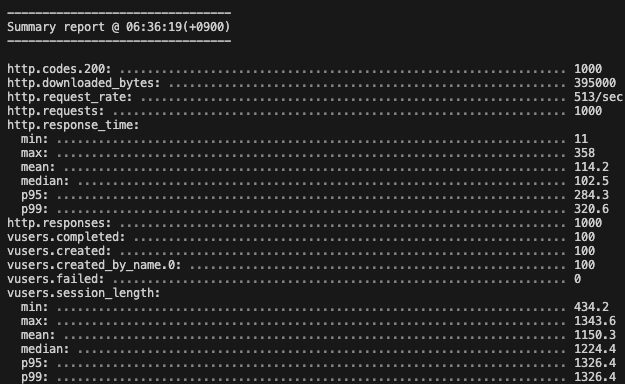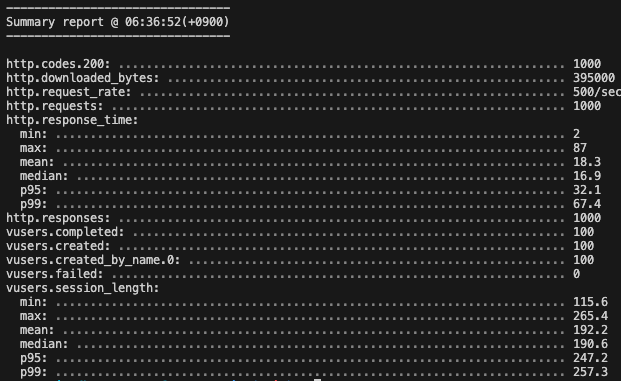TypeORM vs Prisma 2
in Study
🚂 Motivation
계속 진행하고 있는 ORM 비교(TypeORM vs Prisma)하다가 같은 실행계획임에도 성능차이가 나는 것을 확인.
TypeORM

Prisma

⭐ What I Learned
SELECT *
FROM users AS u
LEFT JOIN company AS c ON u.company_id = c.id
WHERE u.id = 500
위와 같은 간단한 쿼리를 각각의 ORM method를 이용해 실행한다.
// ID 500인 유저 찾기(TypeORM)
async findUsersForTypeORM() {
return await this.users.find({
where: { id: 500 },
relations: {
company: true,
},
});
}
// ID 500인 유저 찾기(prisma)
async findUsersForPrisma() {
return await this.prisma.users.findMany({
where: { id: 500 },
include: {
company: true,
},
});
}
이 때, 실질적으로 실행되는 쿼리와 실행계획은 다음과 같다.
TypeORM
Query
SELECT `Users`.`id` AS `Users_id`,
`Users`.`name` AS `Users_name`,
`Users`.`gender` AS `Users_gender`,
`Users`.`created_date` AS `Users_created_date`,
`Users`.`updated_date` AS `Users_updated_date`,
`Users`.`company_id` AS `Users_company_id`,
`Users__Users_company`.`id` AS `Users__Users_company_id`,
`Users__Users_company`.`name` AS `Users__Users_company_name`,
`Users__Users_company`.`address` AS `Users__Users_company_address`,
`Users__Users_company`.`longitude` AS `Users__Users_company_longitude`,
`Users__Users_company`.`latitude` AS `Users__Users_company_latitude`,
`Users__Users_company`.`scale` AS `Users__Users_company_scale`,
`Users__Users_company`.`big_job_kind_id` AS `Users__Users_company_big_job_kind_id`,
`Users__Users_company`.`mid_job_kind_id` AS `Users__Users_company_mid_job_kind_id`,
`Users__Users_company`.`small_job_kind_id` AS `Users__Users_company_small_job_kind_id`
FROM `users` `Users`
LEFT JOIN `company` `Users__Users_company` ON `Users__Users_company`.`id` = `Users`.`company_id`
WHERE ((`Users`.`id` = 500));
실행계획
| id | select_type | table | partitions | type | possible_keys | key | key_len | ref | rows | filtered |
|---|---|---|---|---|---|---|---|---|---|---|
| 1 | SIMPLE | Users | null | const | PRIMARY | PRIMARY | 4 | const | 1 | 100 |
| 1 | SIMPLE | Users__Users_company | null | const | PRIMARY | PRIMARY | 4 | const | 1 | 100 |
Prisma
Query
SELECT `test_db`.`users`.`id`,
`test_db`.`users`.`name`,
`test_db`.`users`.`gender`,
`test_db`.`users`.`created_date`,
`test_db`.`users`.`updated_date`,
`test_db`.`users`.`company_id`
FROM `test_db`.`users`
WHERE `test_db`.`users`.`id` = 500;
-- id 500인 유저의 company id가 259인 것을 찾아 애플리케이션단에서 조합한 후, 두번째 쿼리를 실행한다.
SELECT `test_db`.`company`.`id`,
`test_db`.`company`.`name`,
`test_db`.`company`.`address`,
`test_db`.`company`.`longitude`,
`test_db`.`company`.`latitude`,
`test_db`.`company`.`scale`,
`test_db`.`company`.`big_job_kind_id`,
`test_db`.`company`.`mid_job_kind_id`,
`test_db`.`company`.`small_job_kind_id`
FROM `test_db`.`company`
WHERE `test_db`.`company`.`id` IN (259);
실행계획
| id | select_type | table | partitions | type | possible_keys | key | key_len | ref | rows | filtered |
|---|---|---|---|---|---|---|---|---|---|---|
| 1 | SIMPLE | users | null | const | PRIMARY | PRIMARY | 4 | const | 1 | 100 |
| id | select_type | table | partitions | type | possible_keys | key | key_len | ref | rows | filtered |
|---|---|---|---|---|---|---|---|---|---|---|
| 1 | SIMPLE | company | null | const | PRIMARY | PRIMARY | 4 | const | 1 | 100 |
결국 두번의 쿼리를 실행하니, 실행계획도 따로따로 분리되게 표현했다.
Issues
실행계획도 사실 같다. const type으로 가장 빠른 타입인것도 확인했고, 둘 다 PRIMARY KEY를 사용한 것도 똑같다. 근데 성능은 중간값 기준 10배 가까이 차이난다.
사실 비교한다면 쿼리문을 두번 실행시켜 애플리케이션과 DB가 두번 통신하는 Prisma가 더 느려야한다고 생각한다.
- 쿼리 캐싱?
- TypeORM은 쿼리 캐싱하지 않고 Prisma는 쿼리 캐싱을 진행해서 부하테스트 환경에서 여러번 쿼리문을 진행할 때, Prisma는 캐싱되어 빠른가?
- 지금 띄워져있는 MySQL 8.0 버전부터는 쿼리 캐싱이 없어졌다고 한다.
- 그래도 TypeORM과 Prisma는 애플리케이션단에서 쿼리 캐싱을 진행할 수 있는데, default는 false라서 위의 코드들에서는 진행되지 않았다.
- 커넥션 풀링?
- Prisma와 TypeORM 모두 커넥션 풀링에 대해 default value로 진행되어 상관 없을거라 여겨짐..
- 킹갓 Prisma?
- 아무래도 최근에 확 뜨고 있는 Prisma가 쿼리 결과를 객체로 변환하는 과정에서 빠른게 아닐까 라는 생각이 든다.
- Typescript가 2012년에 출시되고 그때부터 TypeORM이 빠르게 적용하며 만들기 시작했으니,, 성능 이슈를 신경쓰지 않고 복잡한 타입안에서 규격을 만들어나가는데 집중했을 거 같다. 공식문서에서도 그런 Geek함이 느껴진다.
근데 왜 타입안정성도 Prisma가 더 좋지…?- 그래도 전 QueryBuilder 사랑합니다
💭 Impression
https://blog.voidmainvoid.net/131
개인적으로 정말 좋아하는 아티클이다.
근데 TypeORM과 Prisma는 비교하면 비교할수록 한쪽으로 마음이 너무 기운다.. TypeORM을 더 많이 써봤고, 더 많이 정감이 가는데 쬐끔 슬퍼지는 거 같다.
